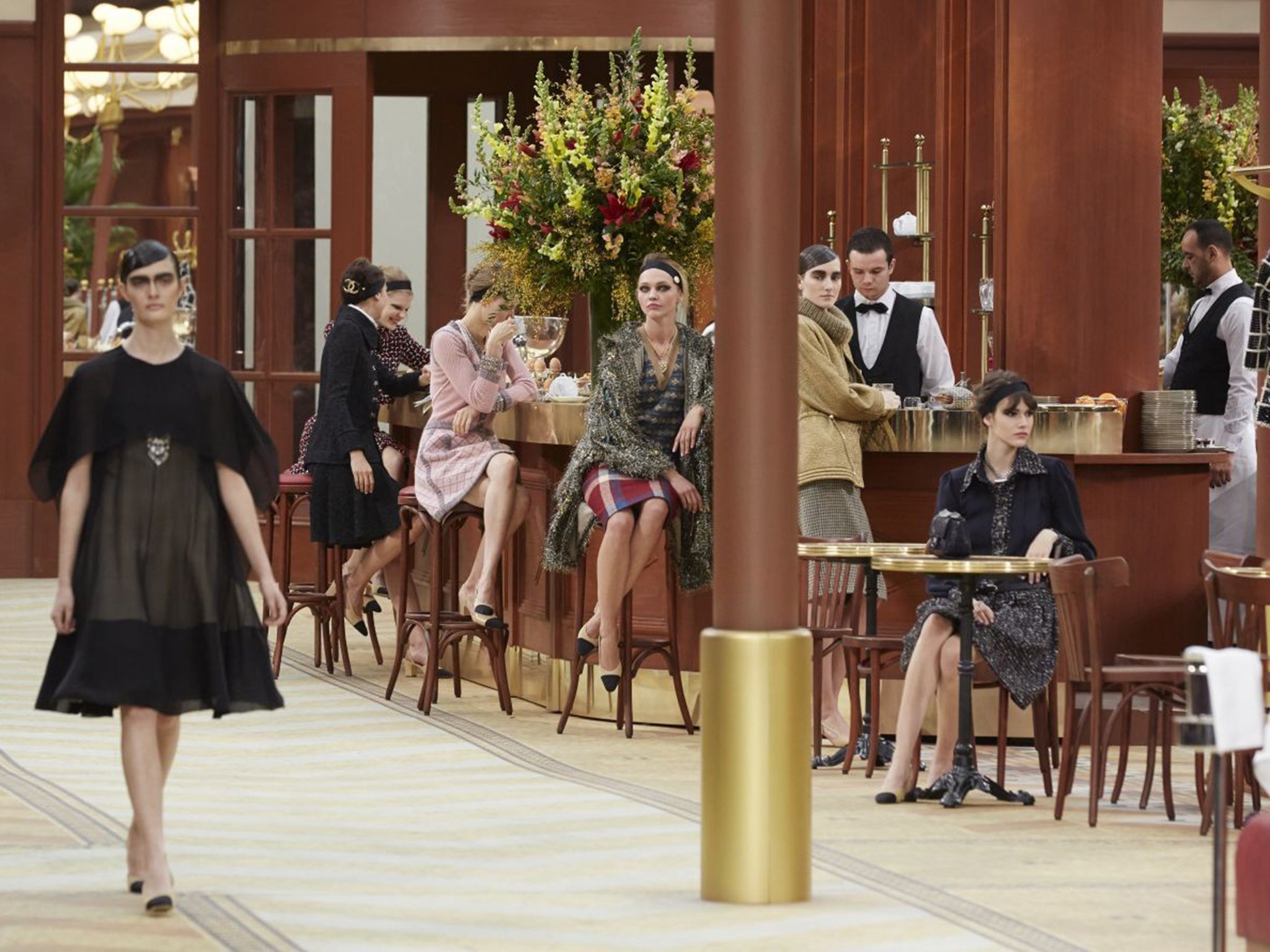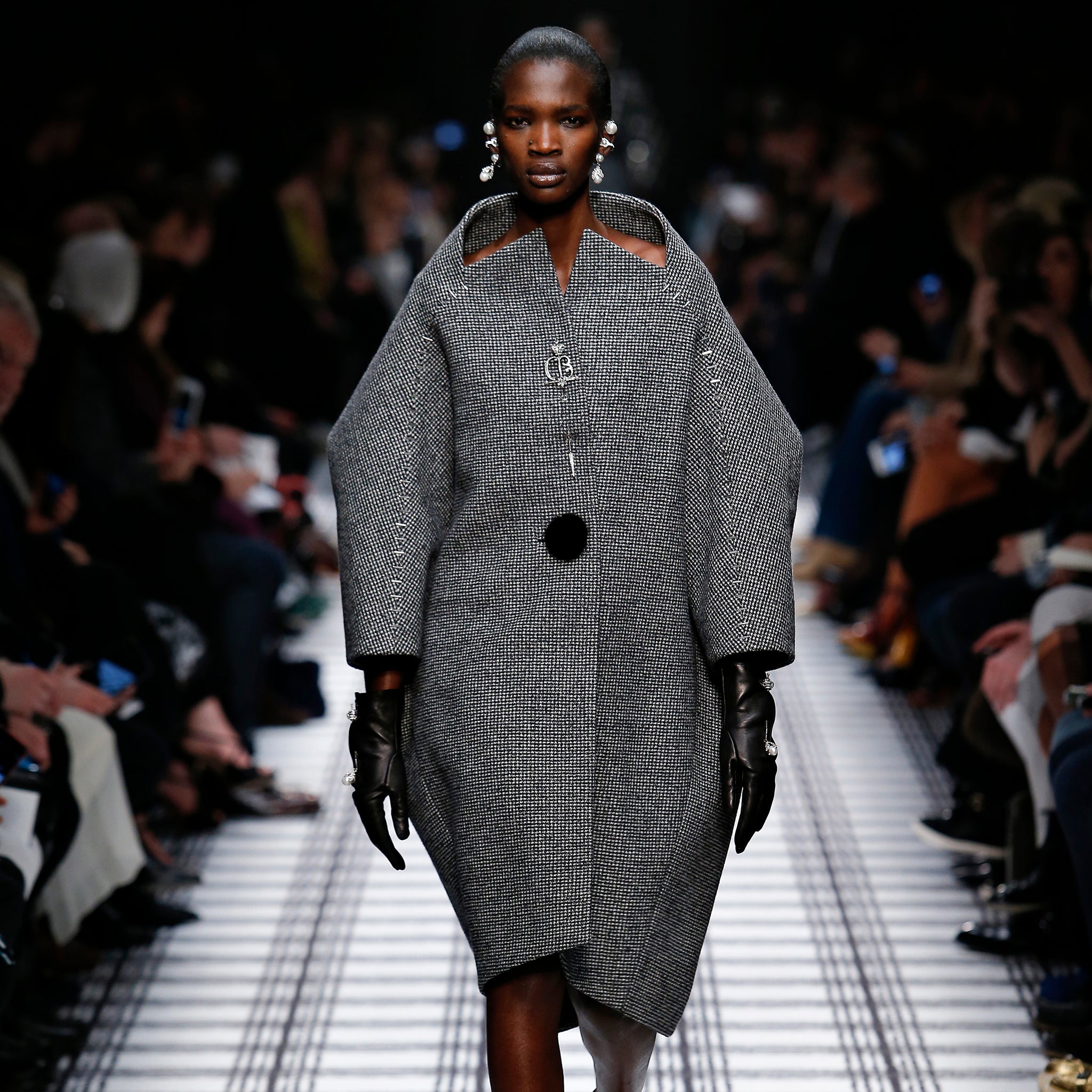The Paris autumn/winter 15 collections were the epitome of French style
Despite Paris being fashion’s indisputable home, it’s the only place where you could imagine anyone asserting that, season after season

You wondered if the chandeliers that hung overhead at Fausto Puglisi’s Emanuel Ungaro show were real or fake; throwbacks to the Second Empire heyday of the hôtel particulier he chose to present in, or something shiny and new, roped up especially for the occasion?
Those light fixtures are a great metaphor for Paris fashion week as a whole. After all, what constitutes French style? Is it something embedded in the fabric of the city, or something gussied up just for fashion week? Is it something that actually exists, or just our perception?
We all have a stereotype of French fashion in our heads, I think. Puglisi’s Ungaro (which wasn’t very good) is an exemplar, knotted up as it got in polka-dots and berets chewed with holes. That’s the superficial stamp of Paris. This autumn/winter 2015 season, you saw that played out in such labels such as Sonia Rykiel (lotsa stripes) and Hermès (lotsa knotted silk scarves), which is odd, given that both are actually helmed by Frenchwomen (Julie de Libran and Nadège Vanhee-Cybulski, respectively). You expected something more synthesised; more sophisticated. That’s what Paris demands.

French style, I’d argue, isn’t superficial. It isn’t as easily assimilated as the facsimile brasserie Karl Lagerfeld erected as the stage for his Chanel show – whose marble-topped tables and bentwood chairs could be read as Café de Flore or Café Rouge, depending on your cynicism. The reason Lagerfeld’s Chanel works is because it’s deeper than the surface gloop, the catwalk sets and the gloss of very expensive clothes.
Chanel financially support a network of artisans to preserve age-old crafts like feather-working and hand-embroidery, the sort of specialist stuff that can only exist in Paris. Chanel’s tweeds are frequently mirages of embroidery; this collection had skirts that resembled an exquisitely-realised rag-bag piled up out of napkins (or dishcloths, again depending on your outlook). The workmanship is only feasible in Paris. That refinement – that’s true French style.

Well, it’s one type of French style. The thing that puts Paris in a different league, fashion wise, is the disparity of its vision. Vive la difference! Vive le fact that Chanel’s exquisitely-realised spectacles can rub shoulders with rough stuff, like Vetement’s chewed-up, distorted outerwear, or the pushed-and-pulled faces at Undercover, above garments so chopped and seamed they themselves seemed the recipients (or victims) of extensive cosmetic surgery. As any glance at the front row of an haute couture show will tell you, that’s quintessentially French.
Unlike those identikit faces, though, it’s the dizzying ricochet from one aesthetic to the next that gives Paris its zing. Designers, generally, aren’t encouraged to tone it down here. There was something satisfying this time, for instance, in the fact that Stella McCartney simply ran with the schlumpadump. Her clothes were, largely, large; fattening and unflattering – and that was the point. They looked, on the whole, interesting. Unlike many of her previous collections, they stood out. As did John Galliano’s Maison Margiela debut, which felt like… exactly like what it was. Namely, Margiela’s tearaway signature sketched with an unmistakable Galliano hand, offering it a new sinuous elegance, a romance, and a childlike glee.
Neither of those were very French – which, oddly, is another stamp of Parisian fashion supremacy. The city welcomes designers from across the globe, whose aesthetics in turn emigrate to others’ collections. That cross-fertilisation, that breaking down of boundaries adds to its undeniable strength, season after season.
Just don’t tell Marine Le Pen. She’d be fuming at Raf Simons’ Dior, which bears the unmistakable mark of his exacting Belgian hand. That hand is colder than Monsieur Dior’s: more rigorous; definitely more modern. This time, he moved us from Dior’s beloved femmes à fleurs to a strange pink veldt prowled by an animalistic, predatory woman. The stuff she was clad in bore only passing resemblance to anything in Dior’s thick books of house history. But because Raf Simons is increasingly confident of his own mind, and has finally jettisoned a scholarly urge to prove, he can give it the stamp of Dior.

The tailoring here was key – boxy stuff fattened up on the waist and slimmed on the bust and hip – a step on and away from the ‘Bar’ jacket whose legacy seemed, frequently, to be restricting Simons in the same way it pinched at its original wearers’ waists. Freedom was the message here. That rang out true over Phoebe Philo’s Celine collection, too, which came across as an unfocused, uncontrollable mess – which was exactly the point to her hairy laces thrown next to sinuous slip-dresses, cut-and-paste knits and fat tennis shoes. It takes all sorts.
Oddly, that was also the message of Nicolas Ghesquiere’s Louis Vuitton show. After an opening year of tightly-edited collections hammering his new silhouette home, he broke free of himself and offered a collection as a journey, and a wardrobe that reflected the variety of modern life, rather than the singularity of a fashion advertisement. That took confidence – to ease up, like Simons and Philo, and let loose a little. And I reckon that ease and confidence are actually the true leitmotif of Parisian fashion. Whenever designers show something too twisted up and tugged together, even if borrowing from that seemingly bottomless wardrobe of Gallic archetypes, it seems out of place.

The ultimate exemplar of freedom in dress is Rei Kawakubo. Her autumn/winter Comme des Garçons collection consisted of 18 proposals. (“Outfits” would not be the correct term, as that would imply the constraints of garments, which Kawakubo freed her mind from a few seasons ago.)
Instead of tinkering with the surface, Kawakubo has decided to devote her collections to abstract ideas made tangible; and if that sounds pretentious, maybe it is. But it is also one of the only genuinely new ideas in fashion to emerge in the last 20 years. What’s more, these constructions spin off commercially viable garments (Comme des Garçon’s retail success – which supports these existential experiments – is a fact frequently overlooked).
Still, Kawakubo is the only designer working today who can boast that they are free from fashion itself. And despite Paris being fashion’s indisputable home, it’s the only place where you could imagine anyone asserting that, season after season.
Join our commenting forum
Join thought-provoking conversations, follow other Independent readers and see their replies
Comments